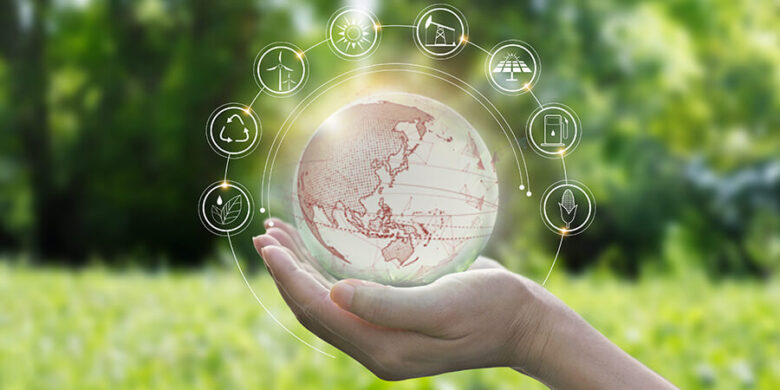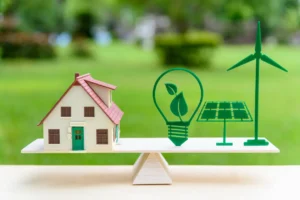Climate change and the depletion of resources are pressing issues at this turning point in the world. Sustainable living has become more important than ever. The concept of green technology (also known as “greentech”) is more than a concept. It’s a revolution that will pave the way to a sustainable future. Green tech is a revolution that aims to align human activities with environmental goals. It also addresses the balance between economic growth and ecological preservation. This article will take you through some of the most important green tech innovations and explain why they are essential to building a sustainable future.
Renewable Energy Sources
Renewable energy sources are the backbone of green technologies. Solar, wind, and hydropower replace fossil fuels with cleaner, more sustainable options. Solar panels have, for example, become more affordable and accessible. This allows both individuals and businesses to harness the energy of the sun. The technology of wind turbines has also led to a massive increase in the energy production capacity. Hydropower has also seen innovation, such as wave energy converters that harness ocean currents for electricity. These renewable resources not only contribute to reducing greenhouse gas emissions but also to energy independence. They lay the foundations for a greener future.
Smart Grids for Energy Efficiency
The distribution and consumption of renewable energy is just as important. The smart grid is revolutionizing how energy is delivered to consumers. These advanced electricity networks monitor energy usage in real time, integrate renewable sources, and minimize energy losses. Smart grids, when combined with AI-driven systems and energy-efficient appliances, ensure that every kilowatt is used effectively. Energy efficiency is a key component of green technology, as it not only reduces strain on the planet but also saves consumers money.
Sustainable Transportation
Sustainable transportation has been brought to the forefront by a global movement towards cleaner cities and greener air. Automakers are investing billions of dollars in battery technology, which will extend the range and reduce charging time. Innovations like biofuel-powered cars and hydrogen fuel cell vehicles are also becoming more popular. Electric buses, trains, and bike-sharing are becoming more popular in public transportation. Green tech accelerates the transition to a sustainable, eco-friendly future by reducing dependence on fossil fuels.
Green Building and Architecture
Green construction is another important aspect of sustainable living. Modern architecture increasingly moves towards eco-friendly, energy-efficient building designs that prioritize sustainable living. Solar panels, rainwater collection systems, and green roofs have become standard features in innovative construction projects. Recycled steel, bamboo, and prefabricated materials are being used to reimagine the construction materials. These innovations reduce the carbon footprints of buildings and ensure sustainable urbanization.
Waste Management and Recycling Technologies
Innovative recycling technologies are addressing the growing problem of waste disposal. Green tech is revolutionizing the waste management sector with AI-driven robots that sort plastics and chemical recycling processes that break them down into usable compounds. Composting technology advancements are also allowing for more efficient processing of organic waste. These innovations not only reduce the burden on landfills but also turn waste into valuable resources in line with the principles of the circular economy.
Precision Agriculture and Sustainable Food Production
One of the greatest challenges we face is feeding a growing world population without depleting our planet’s natural resources. Precision agriculture is one way that green tech can help. It uses technology to improve farming techniques. Drones and AI-powered platforms can monitor crop health and optimize water use, as well as manage pest control. This ensures that all resources are used efficiently. Hydroponics and lab-grown beef are also innovative innovations that reduce food production’s environmental impact. Green tech, by rethinking agricultural practices and paving the path for resilient and sustainable food systems, is revolutionizing agriculture.
Carbon Capture Storage
Carbon dioxide reduction is one of the biggest challenges to combating climate change. Carbon capture, utilization, and storage (CCUS) technologies are becoming powerful weapons in this battle. These technologies collect CO2 emissions and store them underground or reuse them in other industries. Companies are developing machines to actively remove CO₂ from the air and convert it to useful materials such as biofuels. These innovations, which actively remove greenhouse gases from the air, are crucial for slowing down global warming.
Green Tech: The role of AI and IoT
Artificial intelligence (AI) and the Internet of Things (IoT) are key to advancing green technologies. AI algorithms help optimize energy usage, predict renewable energy outputs, and drive sustainable farming. IoT devices allow for real-time monitoring and analysis of environmental conditions, energy usage, and water consumption. AI and IoT work together to create sustainable, smart ecosystems that use resources intelligently. This leads to a greener and more efficient world.
Challenges and Opportunities
Green tech is not without its challenges. The need for wide adoption and high initial costs are often obstacles to progress. The growing demand for green solutions and the increasing investment in them signal a promising tomorrow. The government, business, and individual players all have a part to play in bringing these technologies to scale and making them available to everyone. We can unlock the potential of green technology and accelerate the transition towards sustainable living by tackling these challenges.
FAQs
1. What is green tech?
Green technology is a term that refers to practices and innovations that are aimed at reducing the environmental impact of products and services and promoting sustainability. Renewable energy, eco-friendly materials, and efficient waste disposal are all part of green technology.
2. What are the environmental benefits of green technology?
Green technology reduces greenhouse gas emissions, promotes energy efficiency, and conserves resources. It is essential in combating climate change.
3. Can people adopt green technology in their daily lives?
Absolutely! Green technology can be used by individuals in many ways.
4. Which industries are most likely to benefit from green technology?
Green technology is transforming industries such as energy, transportation, agriculture, and waste disposal.
5. What role does government play in green technology?
The government can encourage green technology by funding it, enacting policies that are supportive, and encouraging businesses and individuals to adopt sustainable technologies.




